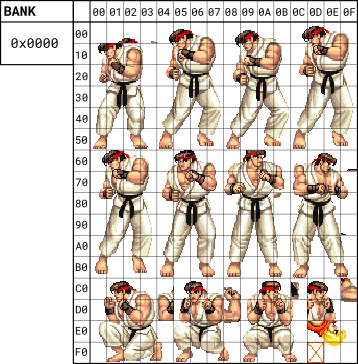Street Fighter II has some really complex spritework! Its characters don’t actually use traditional sprites, but more what amounts to custom tile layers for each one. This helped unlock characters from being mostly rectangular, and allow them to have poses with radically different shapes.

Fabian Sanglard has a great article about how character art was created for that system that’s well worth your time to have a look at. Well, maybe it’s worth it? I don’t know you. For all I know you’re looking for sewing advice. This is probably the wrong site for that. No offense to all you clothes-makers out there.
ROMs were expensive, and Street Fighter II required a lot of them, so it was important to make the most out of each one. A big rectangular shape around Edmond Honda would contain a lot of empty, wasted space. Imagine how much space they would have wasted with Dhalsim’s long stretchy legs! With this system, they only had to include the graphics data that would actually contain pixels.

This was in 1991, mind you. More recent development practices would probably have the data be compressed in storage, which would take care of all those empty pixels, or at least they could make a tool to handle figuring out which tiles should contain data. What the Street Fighter II artists had to do was create physical representations of each character on a physical board, chop that up into squares, and figure out what each tile had to contain, a laborious process.
Fabian reckons this system was used for other CPS-1 games, going back to at least Forgotten Worlds. Looking at the tile layouts of CPS-2 titles, it seems a lot more evident that they used a packing tool to handle fitting their characters into the memory space. For more info, please go check out the article!
